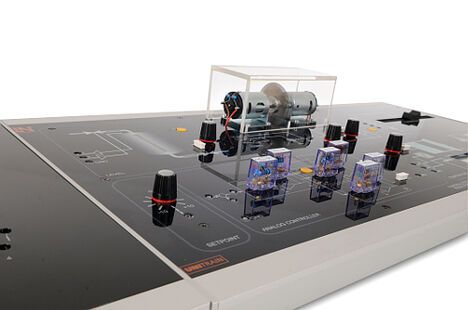Closed-loop control technology (UniTrain)
Closed-loop control technology (UniTrain)
In the age of automation, closed-loop control technology is of supreme importance for modern, technical systems. Optimised control loops help engineers in the area of production and process control technology to efficiently manage such resources as energy and raw materials and ensure product quality. Furthermore, by integrating automatic technology, innovative, intelligent products can be made which are a prerequisite for being competitive on world markets. The spectrum of applications range from anti-locking systems in motor vehicles to auto-pilots in jumbo jets and position controls for satellites or space vehicles - from automatic range finding in pocket cameras to air-conditioning control in office buildings all the way to the automatic process control of chemical processing plants in the chemical industry. Using the training system for closed-loop control technology the student can obtain graphic and authentic training in the fundamentals and advanced topics of control engineering. This system utilises state-of-the-art training equipment like digital controllers and multimedia systems to provide all the technical know-how and hands-on skill the student requires.

UniTrain multimedia courses on automation and control technology employ a large number of experiments and animations to give an introduction to control technology. Students taking the course become familiar with the components and various control loops along with their typical response and behaviour. Many experiments study controlled systems, determination of step responses and the optimisation of control loops. Real experiments provide training in the use of important aids such as Bode plots and locus diagrams.
Training contents:
- Operational principles of open- and closed-loop control
- Design and function of continuous and discontinuous controllers
- Temperature control using switching and continuous controllers
- Speed control for a 4-quadrant drive system
- Position control along a linear axis
- Design of lighting control for a room
- Measurement of the response of control loops over time: recording of step response
- Experimental investigation of control response of various continuous controllers
- Parameter setting and optimisation of control loops
- Investigation of control system response to changes in reference and disturbance variables
- Investigation of closed control loops